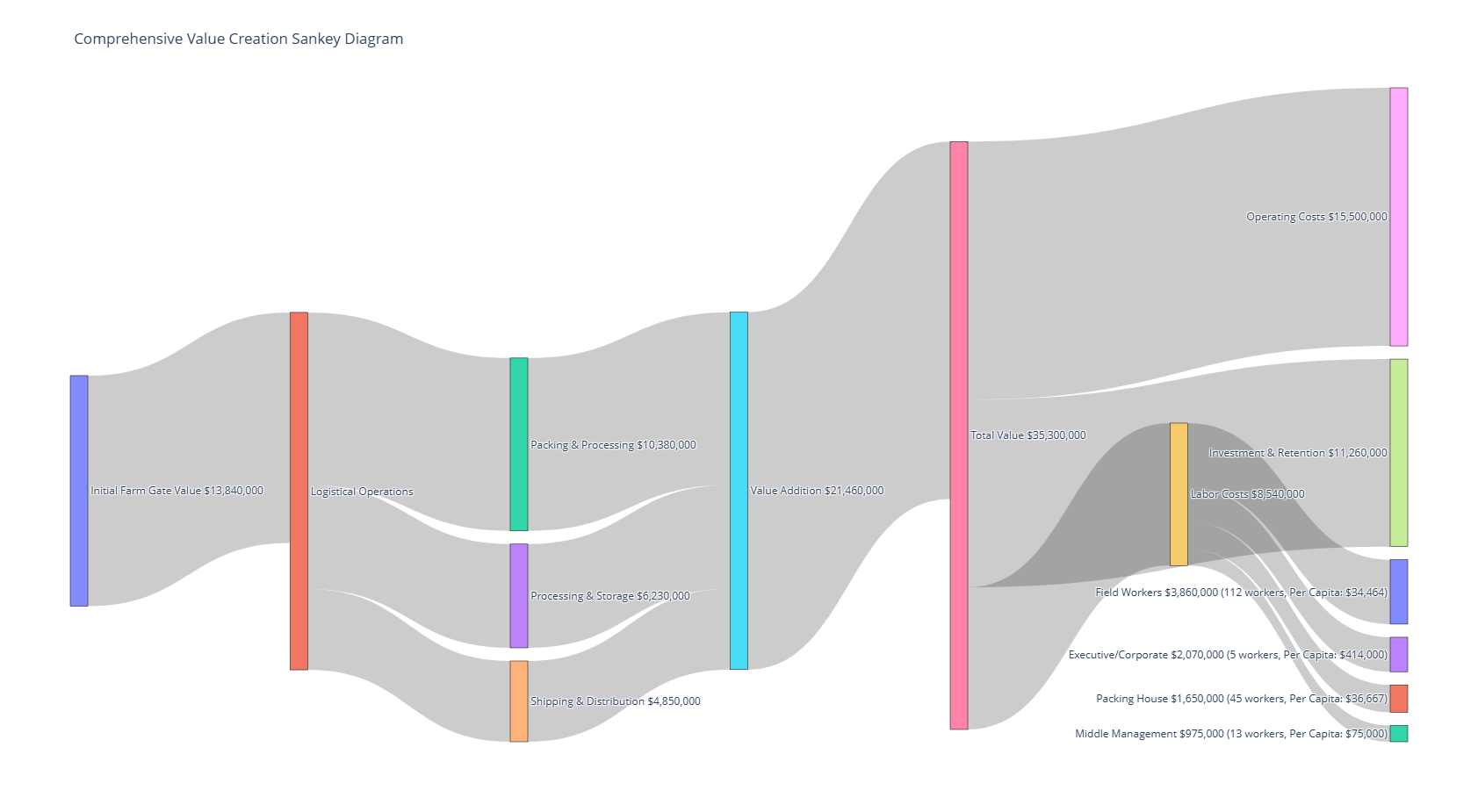Absentee Landownership Impact Analysis
Our absentee landowner tracking project investigates the relationship between land ownership patterns and economic outcomes in agricultural communities. We document how absentee ownership affects local economies, labor conditions, and environmental practices across California.
Our presentation of findings at the February 12, 2025 California Agricultural Land Equity Task Force Meeting in the Coachella Valley
Landowner Linkage Maps

Mecca, CA and Statewide Landowner Linkage Map showing ownership patterns and geographical relationships
Our landowner linkage maps trace the geographic connections between agricultural land and its owners. These visualizations reveal patterns of distant, corporate, and investor ownership that may be invisible to casual observation.

Detailed linkage map of Mecca, CA and the Western Coachella Valley region
The Western Coachella Valley represents a critical case study for our work. In this region, we've documented extensive patterns of absentee ownership where productive agricultural land is controlled by entities with little connection to local communities or ecological knowledge.
Defining Absentee Landownership
What is an Absentee Landowner?
We define absentee landowners as individuals or entities who own agricultural land but do not reside in the community where the land is located, do not participate directly in its management, and primarily extract value from the land without contributing to local economic development or environmental stewardship.
Key characteristics include:
- Geographical distance between owner's residence and the owned land
- Limited or no participation in day-to-day agricultural operations
- Primarily economic relationship to the land (as opposed to cultural, historical, or ecological)
- Extraction of land value and agricultural profits from rural communities to urban centers and/or adjacent wealthy locations
Our research has found that absentee ownership often correlates with more exploitative labor practices, less investment in soil health and ecological stewardship, and reduced community economic benefits from agricultural production.
Value Chain Analysis

Sankey diagram visualizing the flow of agricultural wealth from production to consumption
Our value chain analysis examines how wealth generated from agricultural production flows through different stakeholders in the food system. These visualizations help identify where value is captured and where it is extracted from local communities.
This work reveals that absentee ownership is just one component of a larger system of wealth extraction. Even when land is owned locally, the majority of agricultural value is often captured by non-local intermediaries, processors, distributors, and retailers.
Beyond Land Ownership: The Importance of Intermediaries
Our research demonstrates that agrarian reform cannot focus solely on land ownership. The agricultural value chain includes multiple points where wealth is transferred away from those who work the land:
- Input suppliers who control seeds, fertilizers, and equipment
- Processors who transform raw agricultural products
- Distributors who control market access
- Retailers who capture significant portions of consumer food dollars
- Financial institutions who profit from either agricultural financing or the assetization of farmland
Comprehensive agrarian reform must address these intermediary relationships and create alternative value chains that retain wealth within farming communities. This means developing:
- Cooperative ownership models for processing facilities
- Community-controlled distribution networks
- Direct producer-to-consumer relationships
- Worker ownership of value-adding processes
